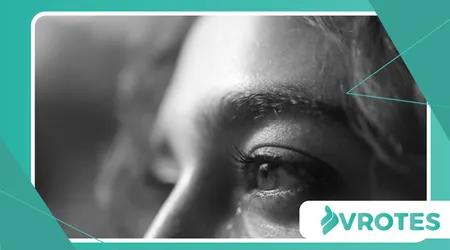How to Set Emotional Boundaries During Hormonal Ups and Downs

Learning to set emotional boundaries is a critical skill for maintaining mental well-being, especially when navigating the tumultuous waves of hormonal shifts.
Anúncios
Whether it’s due to menstrual cycles, perimenopause, or other endocrine fluctuations, these hormonal changes can feel like a high-speed roller coaster.
The key is to understand how these biological rhythms impact our emotional landscape.
For example, a woman may feel inexplicably irritable or sensitive in the week leading up to her period.
Without clear boundaries, this emotional volatility can spill over, leading to conflict with loved ones.
Anúncios
It’s not about controlling the emotions themselves, but rather, about managing their impact on our interactions.
The Science Behind Hormonal Impact
Hormones like estrogen and progesterone directly influence neurotransmitters in the brain, such as serotonin and dopamine.
A drop in serotonin, for instance, can lead to feelings of sadness or anxiety.
These biological realities are not excuses, but they are crucial context for understanding our feelings.
A well-known study published in the journal “Psychoneuroendocrinology” in 2023 highlighted this connection, finding a significant correlation between fluctuating hormone levels and mood instability in premenopausal women.
This research underscores the importance of a compassionate, self-aware approach.
The analogy of a ship on a stormy sea is fitting. You can’t control the waves, but you can learn to steer your vessel with skill and a strong hand.
Emotional boundaries are your navigational tools. They prevent you from capsizing and taking others down with you.
Recognizing Your Triggers and Limits
The first step in establishing effective boundaries is to identify your emotional triggers.
These are the specific situations or interactions that tend to provoke a strong response when you’re hormonally sensitive.
A trigger could be a critical comment from a family member or a minor disagreement at work.
Read here: Self‑Soothing Tactics When Hot Flashes Hit
Understanding your personal limits is equally important. What level of emotional energy can you handle on a given day without feeling overwhelmed?
This self-awareness allows you to anticipate challenges.
The Power of Proactive Communication
Openly communicating your needs is an essential component of setting boundaries.
This isn’t about blaming or making demands. Instead, it’s about sharing your current state with those close to you.
For instance, you could say, “I’m feeling a bit more sensitive than usual today, so I might need some extra quiet time.”
This type of proactive statement helps others understand your behavior without feeling personally attacked. It gives them the chance to support you rather than react defensively.

Practical Strategies to Set Emotional Boundaries
Establishing and maintaining these boundaries requires a few practical techniques. One effective method is to create a “safe space” for yourself, both physically and mentally.
This could be a designated quiet corner in your home or a simple mental exercise of detachment.
Another strategy is the “pause and reflect” technique.
See how interesting: Breathing Exercises to Instantly Center Yourself During a Flare-Up
Before reacting to a situation, take a moment to breathe and ask yourself, “Is this reaction proportional to the event, or is it amplified by my current state?”
This self-check can prevent many unnecessary conflicts.
Let’s imagine a scenario: Your partner asks a simple question like, “Did you remember to take out the trash?” On a regular day, this is a non-issue.
During a hormonal peak, it could feel like a personal attack. By pausing, you can recognize the hormonal influence and respond calmly instead of snapping.
This is how you set emotional boundaries effectively.
The Two-Fold Benefit of Boundaries
The benefits of setting emotional boundaries extend beyond self-preservation. When you manage your emotional responses, you also improve the quality of your relationships.
Others learn to trust that your reactions are a reflection of the situation, not of an internal, unmanaged storm.
Another example: a friend might make an offhand joke that you would normally find funny. During a sensitive time, it might feel hurtful.
Check this out: Flower Essences to Support Emotional Menopause Transitions
A healthy boundary involves saying something like, “That comment landed differently for me today; I need to step away for a bit.”
This shows you respect yourself and your feelings while also giving your friend a chance to understand.
This skill of self-management is not a sign of weakness; it’s a testament to your emotional intelligence and maturity.
It’s about building resilience for yourself and for those around you. When you set emotional boundaries, you are teaching others how to treat you.
When to Seek Professional Support
Sometimes, the hormonal fluctuations and their emotional impact are too significant to manage alone. It’s crucial to know when to seek professional help.
A therapist or counselor can provide tailored strategies and support. They can help you identify deeper patterns and build a more robust emotional toolkit.
Moreover, a visit to an endocrinologist can help rule out any underlying medical conditions.
A 2024 survey by the American Psychological Association found that individuals who actively manage their emotional health with professional guidance reported a 40% improvement in relationship satisfaction.

The willingness to ask for help is a sign of great strength, not failure.
| Strategy | Description | Benefit |
| Proactive Communication | Informing loved ones about your emotional state. | Reduces misunderstandings and invites support. |
| Pause and Reflect | Taking a moment before reacting to a trigger. | Prevents impulsive, hormonally-charged responses. |
| Creating a “Safe Space” | Designating a quiet place for self-care. | Provides a sanctuary to recharge and regulate emotions. |
| Seeking Professional Help | Consulting with a therapist or doctor. | Offers specialized tools and addresses underlying issues. |
The ultimate goal is not to eliminate all emotional turbulence, which is impossible. Instead, it is to learn to set emotional boundaries with grace and confidence.
This allows you to navigate the ups and downs of life, hormonal or otherwise, with greater stability. We all face these challenges; what defines us is how we choose to respond.
Why would you allow your inner world to be dictated by external forces or biological shifts you can’t control, when you have the power to steer your own ship?
In the end, learning to set emotional boundaries is a gift you give to yourself and to those you care about. It’s a profound act of self-love and a foundational practice for a well-lived life.
Frequently Asked Questions
What is the biggest mistake people make when trying to set emotional boundaries?
A: A common mistake is to be too reactive instead of proactive.
People often wait until they are already in a heightened emotional state to try and set a boundary, which is much more difficult. Proactive communication and self-awareness are key.
Is it selfish to set emotional boundaries?
No, it is a necessary form of self-care. Think of it as putting on your own oxygen mask first on an airplane. You cannot help others effectively if you are not taking care of your own emotional needs.
How do I handle a negative reaction from someone when I set a boundary?
It’s important to remember that their reaction is a reflection of their own feelings and not a failure on your part.
You can respond calmly by reiterating your need without apology. For example: “I understand you’re frustrated, but this is what I need right now.”
++ Setting Healthy Boundaries in Relationships
++ The benefits of strong boundaries for healthy hormones and a happier midlife.
